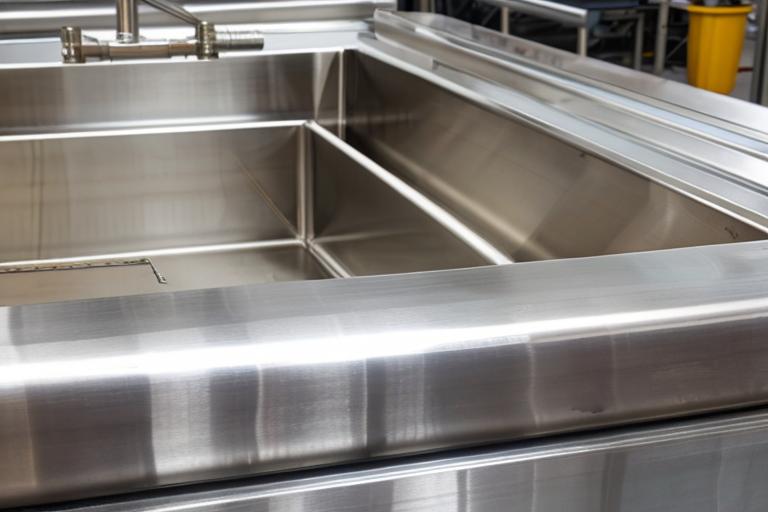Regarding the shiny appeal of stainless steel, one may wonder what kind of cleaners can maintain its glossy appearance without causing damage. Stainless steel fixtures and appliances have a striking appearance and are long-lasting. However, keeping their pristine appearance requires a proper cleaning method. It’s important to choose the correct cleaner for stainless steel because the wrong one can cause corrosion, scratches, or unsightly streaks. In the quest for a spotless and stainless future, this article explores safe and effective ways to keep your stainless-steel surfaces gleaming.
Understanding stainless-steel
This type of material may be resistant to corrosion or staining but is not entirely protected from dents, grime, and smudges. Appliances or items made of stainless steel can accumulate water spots, fingerprints, and grease, that’s why you need cleaners that are not only safe but also effective.

The best practices to clean your stainless steel appliances
Stainless steel is primarily made up of iron, nickel, chromium, and a few contents of other elements. Chromium contains an oxide layer that makes this metal stainless to prevent both rust and corrosion.
Understanding the direction of grain on stainless steel appliances is crucial for both aesthetic and functional reasons. A seamless, uniform grain direction enhances the visual appeal of the appliance, providing a polished and sophisticated look. Functionally, it plays a pivotal role in maintenance, as cleaning against the grain can lead to unsightly scratches and diminish the appliance’s overall durability. Thus, appreciating and working with the grain direction ensures longevity and an elegant finish for these essential household items.
Safe cleaning supplies
Microfiber cloth & water
This combination, which uses easily accessible materials like water and microfiber cloth is arguably the simplest cleaning method for stainless steel. A gentle approach is to first rinse the surface with warm water to extract any oils or grease. It’s an environmentally friendly option because it works well to eliminate dirt or light smudges without using harsh chemicals.
Dish soap
The mild dish soap used for cleaning utensils also works great on stainless-steel surfaces as it removes excess oils and grease. You can either mix it up with water before cleaning or apply it on the surface using a damp rag. When wiping the soapy solution on the surface, it is always recommended to work towards the grain. If necessary, go over the surfaces once more with the cleaning rag to get rid of stubborn fingerprints.
Vinegar and olive oil
Use a clean microfiber towel to apply white vinegar all over the appliance or equipment. Another alternative is to spray the vinegar on the surface, allow it to rest for a while, and then wipe it clean. To remove visible grime, apply a generous amount of white vinegar as many times as possible. After that, take a clean towel and dab a few drops of olive oil on the freshly cleaned surface. Vinegar removes grime, while olive oil polishes stainless steel.
Baking soda
It is used in a variety of applications because it works effectively at removing tough stains. Create a thick solution by adding baking soda in a bucket of warm water. Apply the mixture on the surface using a lint-free cloth and allow some time for the solution to work its way through the grime. Afterward, rinse it thoroughly using clean water to get rid of the dissolved dirt. Dry it afterward to avoid leaving behind streaks.
Commercial cleaners
Use products made exclusively for cleaning stainless-steel appliances that have stubborn stains or scratches. Although it could be less budget-friendly than the above options, it contains extra components that work great at removing stubborn stains and polishing the surface.
Things to avoid
Even though stainless steel can be safely cleaned, it is crucial to stay away from abrasive materials and cleaning techniques that can cause damage. The two main things to avoid is steel wool or abrasive cleaners. They can tarnish the shiny appeal of stainless steel even though they can be used on other materials. Harsh chemicals like ammonia or bleaching agents shouldn’t be used on this material as it discolor and corrode the surface. Avoid using colored scrubbers or towels because they can leave dyes or scratches on stainless steel. Although a rough sponge or cloth appears to be more effective at removing dirt from the surface, its abrasive texture can leave scratches.
It shouldn’t be difficult to maintain the beauty or durability of stainless steel if you are using the right techniques. The ideal cleaning method may vary based on the intensity of dirt, grease, or oil present on the surfaces. Whether you use water and mild detergent or prefer the extra shine of olive oil, you can safely and effectively keep the surfaces clean and sparkling. Properly maintaining stainless steel not only keeps it shining but also protects the surface from corrosion.
